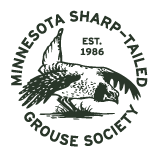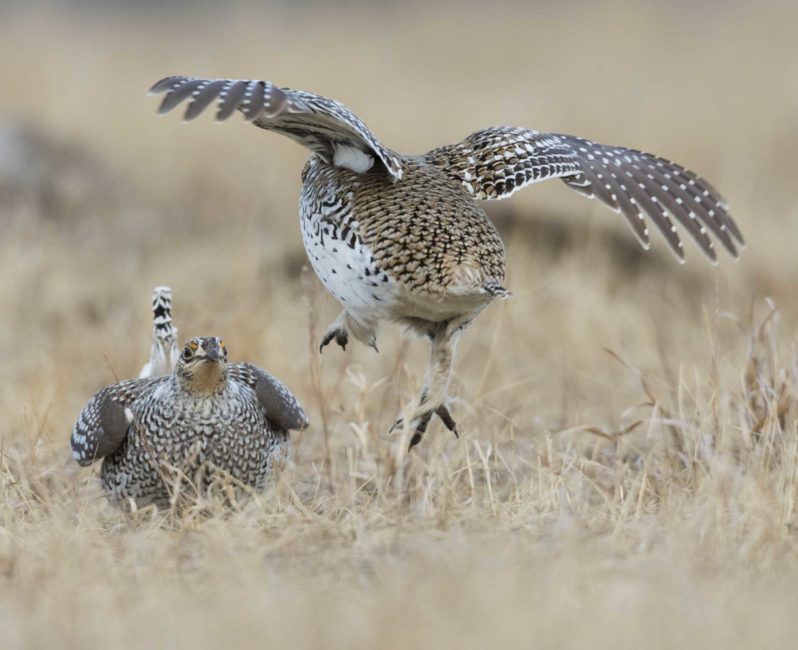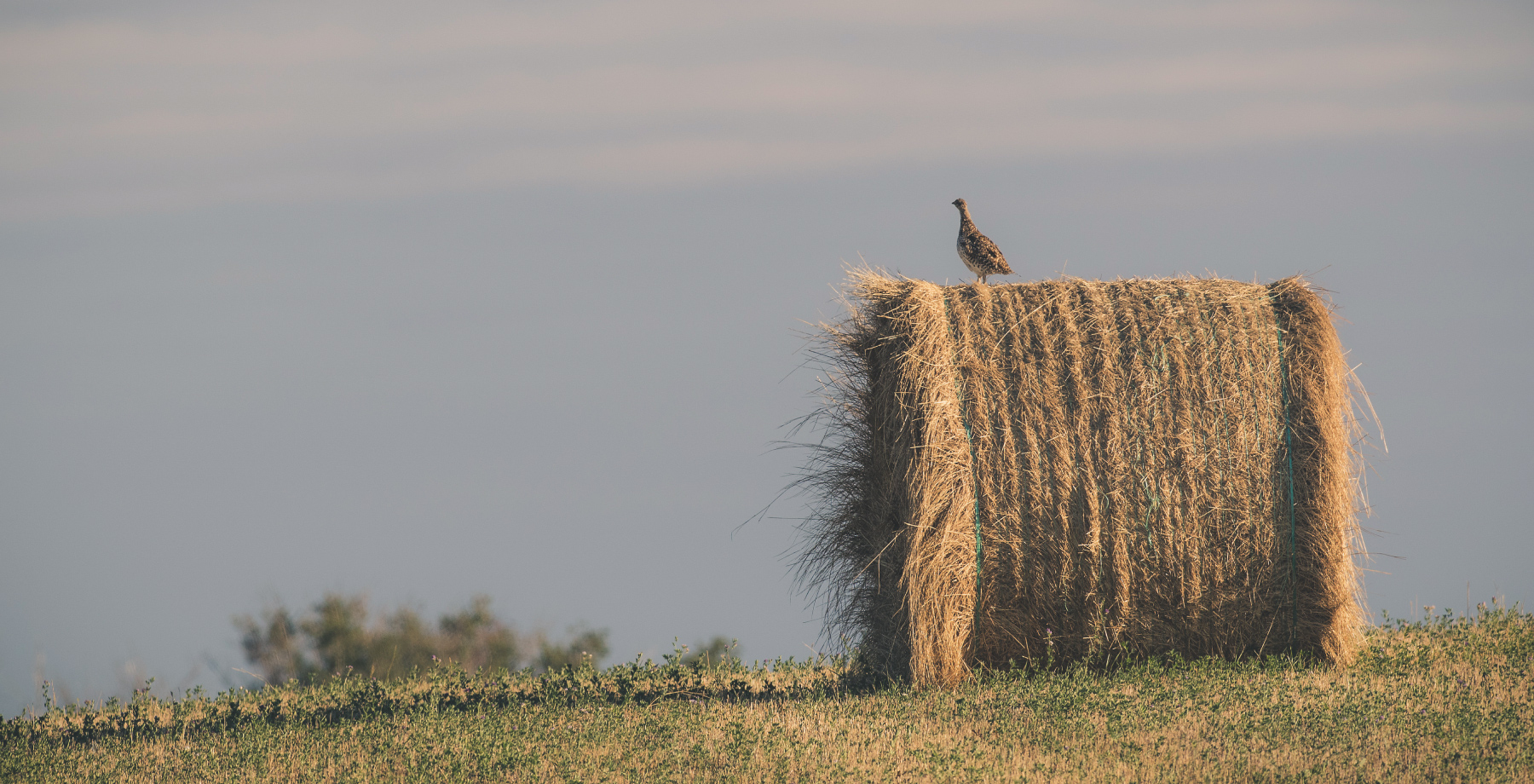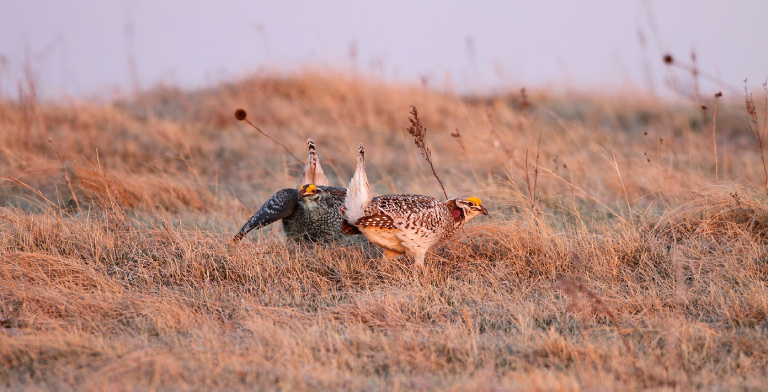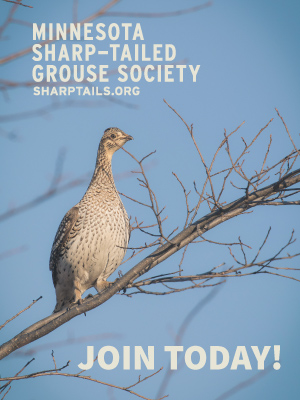Sharp-tailed grouse are a unique, native grouse of Minnesota that require extensive, open landscapes. Due to a long term population decline from habitat loss, they are considered a Species in Greatest Conservation Need. Large patches of natural habitat, such as sedge meadow, shrub swamp, open bog, or old fields are critical. These habitats can be complemented by hay land, pasture and limited amounts of crop land. Landowners are encouraged to maintain, enhance and restore these habitats. You can help by:
- Develop and implement a stewardship plan – Thoughtful, long term planning for habitats and wildlife in your neighborhood and on your land will increase your success. Map and plan which habitats need management, when they need it and what techniques to use.
- Maintain existing natural grasslands, brushlands and wetlands – Adequate quality, native habitat is key. Techniques such as mowing, shearing, timber harvest, hand cutting and prescribed fire help maintain and enhance open habitats. The larger and more diverse the open habitats, the better!
- Prevent & control invasive plant species – Invasive plants (such as buckthorn, common tansy, and reed canary grass) negatively impact habitats by reducing the quantity and diversity of native plants. The key to successful control is early detection of new infestations and prevention of spreading. Ensure all equipment such as ATVs, mowers, dozers, and logging equipment is thoroughly clean before it arrives at or leaves your land.
- Remove excess woody cover & don’t plant trees in open habitats – Sharptail generally need open habitats with scattered clumps of young shrubs and trees such as bog birch, willow, alder, aspen and birch. Don’t plant trees, especially conifers, within ½ mile of leks (dancing grounds). Blocks and rows of trees fragment open habitat patches and provide raptor perches and predator denning sites and travel lanes.
- Use rotational grazing – Light to moderately grazed pastures with at least six inches of cover can provide quality habitat. Lek areas can be grazed more heavily to remain attractive to males in spring. Alternate grazing periods to promote plant diversity.
- Adjust haying practices – Reduce nest, hen and chick loss by using a flushing bar, haying from inside to outside of fields, and delaying haying until after the prime nesting season (Aug.1).
- Plant small grains in crop rotations & avoid fall tillage – Small grains (such as wheat, oats, flax, buckwheat and rye), crop residue, and waste grain can provide brood rearing and winter cover, and valuable winter food for sharptail and other wildlife.
- Plant cover crops – They not only promote soil health, but provide cover, plant food, and insects for sharptail (especially important to young chicks) and other wildlife. The more diverse the cover crops, the better.
- Limit use of chemicals in agricultural practices – Evidence is growing that some chemicals, such as certain pesticides, are harmful to wildlife, bees, other insects, and aquatic systems.
- Encourage your neighbors to do the same! – It is critical to look as the neighborhood as a whole and collaboratively manage large, open habitat complexes of at least two square miles, and preferably more.
Have an idea for a habitat project? Need help understanding conservation programs? Call your local Natural Resources Conservation Service (NRCS) office about technical and financial assistance.
To find your local office, visit the Minnesota NRCS web page at www.nrcs.usda.gov/wps/portal/nrcs/site/mn/home click on “Minnesota Directory”, “Locate NRCS Minnesota Field Offices” and your County.
Last modified: June 25, 2021
